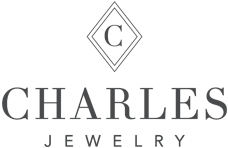
Peridot
Scientific Name: Forsterite Olivine
Scientific Formula: (Mg, Fe)2SiO4
The vivid Peridot is one of the few crystals that comes in only one color – green. The depth of green depends on how much iron is contained in the crystal, varying from yellow-green to olive to brownish green. The green of Peridot does not change in artificial light. This bright, shimmering gemstone is an ideal complement to the colors of summertime. Peridot is the traditional birthstone for the month of August.
The name Peridot is believed to come from either the Arabic word faridat meaning “gem” or to be derived from the Greek “peridona“, “to give a lot“. Native Hawaiians referred to Peridot crystals as the tears of Pele, the Goddess of fire. According to folklore, the Peridot will bring its wearer success, peace, and good luck.
Peridot is mined in the US, Australia, Brazil, China, Kenya, Mexico, Myanmar, Norway, South Africa, Sri Lanka, Tanzania and the eastern lava fields of Saudi Arabia. Peridot crystals have even been collected from iron-nickel meteorites. Recently, Peridot of the highest quality ever discovered was found in Pakistan. This Pakistani Peridot is quite large and should bring many brilliant stones to market as it is developed.
Peridot has been found in Egyptian jewelry from the early second millennium BC. The ancient Romans coveted the brilliant green Peridot, naming it the “Evening Emerald“. Peridot is found in many medieval churches of Europe. Throughout the Baroque Era (16th to 18th centuries), the period of Michelangelo, Rubéns, Rembrandt, and Boucher, this stone was especially cherished.
Peridot is difficult to cut. Jewel artisans attempt to split Peridot according to its crystal structure. The stone is split in classical table and facetted cuts. The final gem may be found in round, antique, octagonal and oval shape. Precut rough crystals break easily. Uncut Peridot as found in nature often has tremendous stress within its crystal structure. Once the cutter has removed the most prominent inclusions, Peridot is wonderfully suited to daily wear. The finished Peridot does not require special care.
Personal preference is the most important factor in choosing a Peridot. Size, color, tone, and clarity will determine the jeweler’s asking price for the stone.
